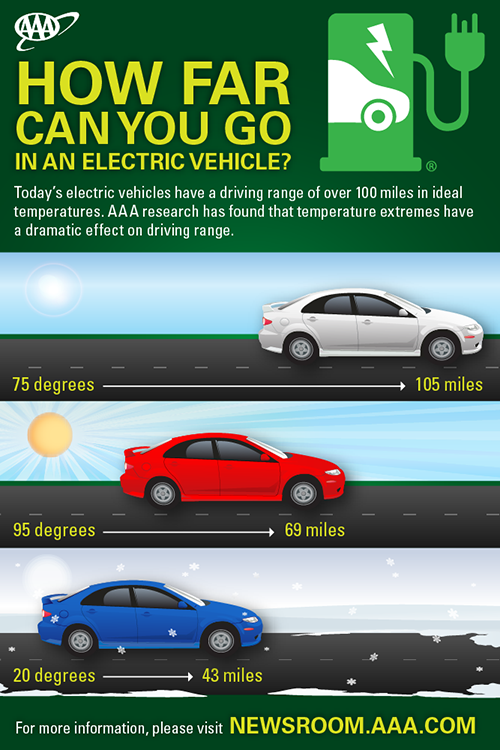The window sticker lists an MPGe (miles-per-gallon equivalent) of 129 city driving miles for the electric vehicle that caught your eye. The salesman shows you a chart that estimates your annual fuel savings will be $1,500. With a daily commute of less than 100 miles, your new EV is a budget-friendly choice.
A few months later, temperatures drop, and so does your average driving range. Knowing how your vehicle operates in all conditions can keep you on the go, rather than stranded, miles from the nearest charging station.
Many factors affect EV mileage: speed, driving style and ambient temperature can reduce the range of a full charge. Cold weather presents two main challenges for electric vehicles: Cold air limits battery performance, and running the heater is a significant drain on the battery.
To better understand the impact of climate on electric vehicle batteries, AAA used the Automobile Club of Southern California’s Automotive Research Center to test three vehicles in cold, moderate and hot temperatures. Vehicles were tested for city driving to mimic stop-and-go traffic, and to better compare with the Environmental Protection Agency’s ratings. All of the vehicles evaluated demonstrated reduced driving range in hot and cold climates; the average EV battery range in AAA’s test was 105 miles at 75 degrees Fahrenheit, but dropped to 43 miles when the temperature was 20 degrees Fahrenheit.
Every driver needs to be aware of conditions that can impact vehicle performance. Limited recharging options means EV drivers need to plan carefully in cold weather. Monitoring the gauge on every trip will help you be better prepared to alter your plans if an additional charge is needed. AAA’s TripTik Travel Planner highlights electric vehicle charging stations along your route.





